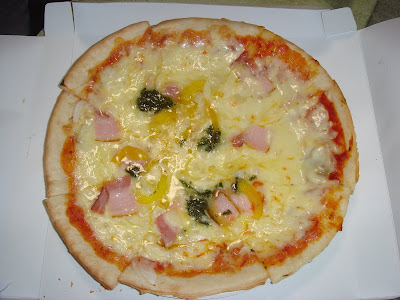Beside the sumo stadium is the huge Edo Tokyo Museum, built to resemble an old style of elevated warehouse. One of Tokyo's most imaginative and interesting museums, it's exhibition space is divided into two zones on two floors tracing life in Edo and then Tokyo, as Edo was renamed in 1868. The exhibits which are interactive, appeal to both adults and children and have explanations in Japanese and English.





The historic route around the museum starts at a traditional arched wooden bridge, a replica of Nihonbashi.

There are life-sized reconstructed buildings, including the facade of a Kabuki theater.

Marvelous scale-model dioramas, some of which are automated, show everything from the house of a daimyo (feudal lord) to a section of Shitamachi.


This is an example of a instrument used by firefighters during the Edo period to alert others when there was a fire. Edo firefighters were established in 1718 to prtect the townspeople. Standards, like this one were symbols for each unit. There were 47 units, each named after a kana character. The "su" unit has been in charge of the Tsukiji area in Chuo-ku.

Most Edo streets were lined with houses (machiya) on both sides. Many shops and flourishing businesses also faced the streets. Off the street, in the back, were the row houses, (nagaya) in which the citizens made their homes. Wells, garbage dumps, and toilets were communal. Each ward had it's facilities for crime prevention and fire prevention, as well as aqueducts and sewers.

Homeowners (yanushi)in each ward were responsible for the management and repair of facilities in the ward. Yanushi oversaw the operation of the fire brigade and supervised other activites directly related to everyday life. Representatives of the yanushi served as town officials and/or as employees. Top authority in city matters was delegated to the town magistrates(machi hugyo), below whom were the town elders and the community heads. These officials were not directly involved with the management of the city. Instead, their duty was to give orders and to oversee city administration.
Here is a life-size reconstruction of a kabuki play come to life. In this section of the museum there were also miniature animated models of a kabuki theatre, showing how special effects were cleverly created. We enjoyed this section very much after having experienced our first live kabuki show earlier in the week!

Here is a closeup shot of what looks like the villian in this kabuki play....

Here is me on a reconstruction of an Edo period rickshaw (jinrikisha). You can still ride in a rickshaw if you are in the Asakusa district.

Here I am on an oversized adult tricycle. This made me laugh uncontrollably as I was getting on it as well as off it....


This is an example of one of Japan's first "light" automobile, a three seater Subaru with a 360 cc engine.

Calling home...collect ofcourse.

If you are in Tokyo and only have a chance to check out only one museum, then I highly, highly recommend Tokyo's most imaginative and interesting museum, Edo-Tokyo Museum. Hope you enjoyed the preview!
































